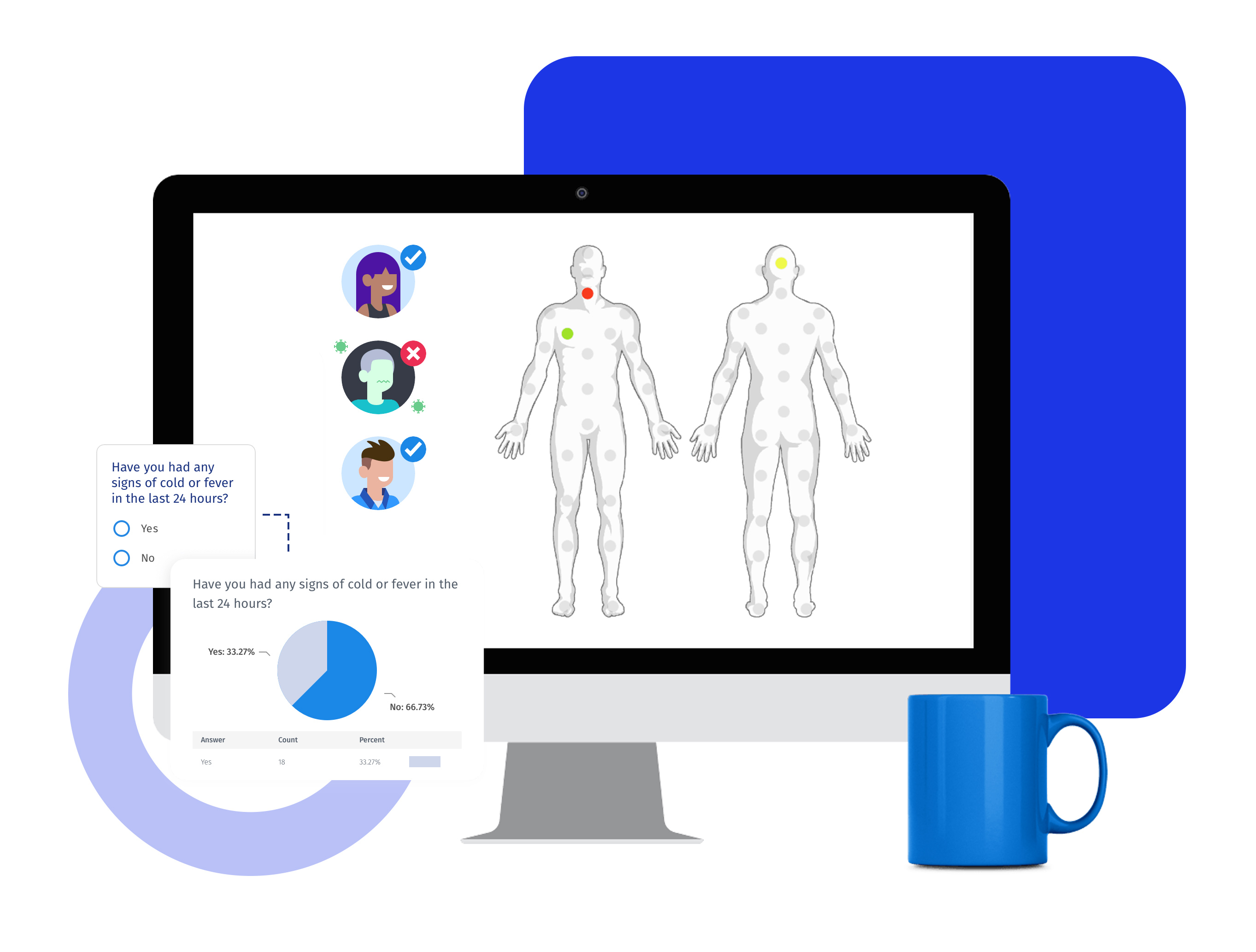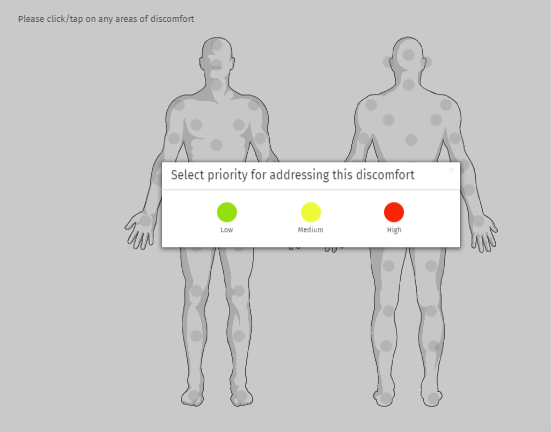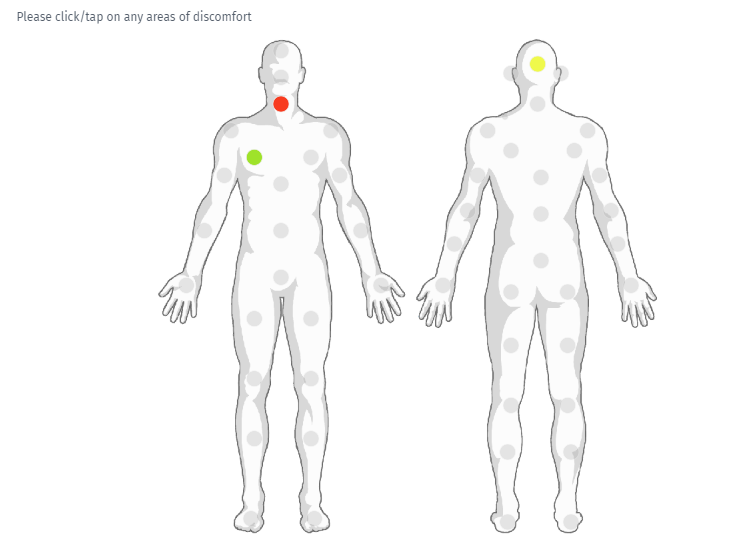With an intent to improve patient experience and efficiency of doctors, we designed a homunculus question type for surveys. Patients can let the doctor know in detail about the difficulty experienced by them. In case of one-on-one meetings with doctor, it is often limited to a single question or a few more due to time constraint.
Homunculus question in surveys
This question type consists of two visual representations of the human body. Once the respondents click on any area, they are asked a follow-up question. This question asks the intensity of their pain or other experiences in the body. Patients can select from the three color-coded choices - Low, Medium, and High.
Respondents can click on 24 points on the front image and 29 points on the back image of the human body. It allows medical professionals to get a preliminary idea of the patient's health condition. Hence, there remains enough room for them to work with patients on their treatment and healthcare. Also, they can ask detailed questions in their further interactions.
Example of a homunculus survey question
Consider a senior citizen patient has suddenly started experiencing pain while walking. Or a patient who is facing difficulty in speaking. While getting an appointment with a physician, his support staff asked the patient to fill out a survey. This survey asks details about the patient's discomfort and serves as a preliminary examination for the physician.


Uses of homunculus questions in the survey
Healthcare professionals have found that homunculus surveys have changed the way they work primarily in two ways.
On-Premise: Personal health data is collected from the patient with a short evaluation survey through a tablet and the QuestionPro offline mobile app. Often, patients answer such questions while they are in the waiting room. If the doctors have this information before they meet the patients, then their appointment will be more productive. Doctors will have a clear idea of what the patient is going through and will spend less time in asking the questions.
Remote assistance: With the advancement in technology, patients can connect with doctors from anywhere. As remote doctors, many QuestionPro users send surveys to patients. It helps them gain an initial understanding of the patient's symptoms before getting on a video call.
Compare responses of patients: With data being logged in the system, you can compare symptoms expereienced by different patients. You can also generate a report from the data based on responses to the preliminary questionnaire.
Advantages of homunculus questions
Save precious time: Healthcare professionals can go through the patient details in advance and avoid basic questions while meeting in person. Also, if the patient and doctor are in different time zones, then homunculus surveys can save a lot of time.
Visual method of sharing data: Both multiple-choice questions and open-ended questions may not completely be able to convey the exact area under pain. In such cases, these advanced question types can locate the precise point through a questionnaire.
Convert qualitative data to quantitative: Healthcare professionals can collect qualitative data such as pain, uneasiness, etc. and their intensity using homunculus surveys. Moreover, they can also convert this data into numbers.
Generate report: Survey creators can generate a report of the patients' responses. Over a while, doctors can analyze the trends in the common areas of discomfort in the patient and derive conclusions.
How to add a homunculus question in your surveys?
Learn how to set up and use this feature with our help file on the Humonculus question.
Survey Software Easy to use and accessible for everyone. Design, send and analyze online surveys.
Research Suite A suite of enterprise-grade research tools for market research professionals.
Customer Experience Experiences change the world. Deliver the best with our CX management software.
Employee Experience Create the best employee experience and act on real-time data from end to end.







